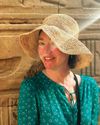
The Week Junior Science+Nature UK
M.G. Leonard
Meet the bug-crazy children's author whose love of nature began with reading.
3 min |
March 2025

The Week Junior Science+Nature UK
BOUNCING BACK
Claire Karwowski tells the terrific, turnaround tales of the endangered creatures that are making a comeback from the very brink of extinction.
6 min |
March 2025
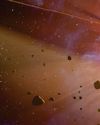
The Week Junior Science+Nature UK
Building blocks of life discovered in asteroid
Dust from a distant space rock could hold the secret to life on Earth.
2 min |
March 2025

The Week Junior Science+Nature UK
THE WORLD'S WEIRDEST MUSEUMS
Jenny Ackland takes a whirlwind tour of some of the oddest exhibitions on the planet.
5 min |
March 2025

The Week Junior Science+Nature UK
A pie for Pi Day
Celebrate this mathematical holiday with a deep-fill dessert.
1 min |
March 2025
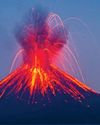
The Week Junior Science+Nature UK
Could we use volcanoes to make electricity?
Find out if people could tap into Earth's fiery depths to generate energy.
2 min |
March 2025

The Week Junior Science+Nature UK
HEADSCRATCHERS
Seeking answers to your science questions? Ask our resident expert, Peter Gallivan
3 min |
March 2025
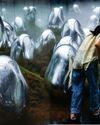
The Week Junior Science+Nature UK
LIVING ORBS
At most exhibitions, you’re told not to touch the artworks.
1 min |
March 2025

The Week Junior Science+Nature UK
People wiggle ears to hear
Can you wiggle your ears? It’s a trick only some people can do, but it turns out that the muscles used to do it also activate when humans are trying to listen to something.
1 min |
March 2025

The Week Junior Science+Nature UK
Skydiving salamanders grip with toes
A new study has found that wandering salamanders pump blood in and out of their toes to help them grip.
1 min |
March 2025

The Week Junior Science+Nature UK
Ancient scroll decoded
Scientists have found a way to “digitally unroll” a scroll that was burnt to a crisp nearly 2,000 years ago.
1 min |
March 2025
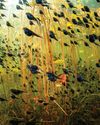
The Week Junior Science+Nature UK
TOUGH TADPOLES
This picture shows a swarm of western toad tadpoles in a lake in Vancouver Island, off the coast of Canada.
1 min |
March 2025

The Week Junior Science+Nature UK
Turning waste to wealth
Meet the planet heroes fighting plastic pollution and poverty.
2 min |
March 2025

The Week Junior Science+Nature UK
Counting tiny sea creatures from space
Scientists are using satellites to count Antarctic krill from space.
1 min |
March 2025
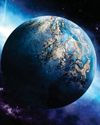
The Week Junior Science+Nature UK
Searching for Planet X
Is there an undiscovered planet playing hide-and-seek beyond Neptune?
3 min |
March 2025
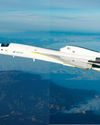
The Week Junior Science+Nature UK
A "BOOMLESS" CRUISE
For the first time in 22 years, a civilian (non-military) aircraft has broken the sound barrier.
1 min |
March 2025

The Week Junior Science+Nature UK
The happiest time of day
A study at University College London (UCL) has found that mornings are the happiest time of day for most people.
1 min |
March 2025

How It Works UK
The speed limit of human thought is ridiculously low
How fast do humans think? It's slower than you might expect.The peripheral nervous system, the network of nerves that delivers information between the brain and the body, takes in environmental information at over a billion bits per second, a speed comparable to a lightning-fast internet connection.
2 min |
Issue 200
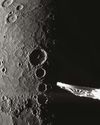
How It Works UK
NEW IMAGES SHED LIGHT ON MERCURY'S NORTH POLE
New photos of Mercury's mysterious north pole reveal a glimpse of the permanently dark, frigid craters that may hold ice dozens of metres thick, even though Mercury is the closest planet to the Sun.
1 min |
Issue 200

How It Works UK
China's 'artificial Sun' shatters a nuclear fusion record
China's reactor has broken its own world record for maintaining superhot plasma, marking another milestone in the long road towards near-limitless clean energy.
2 min |
Issue 200
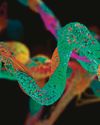
How It Works UK
A new database reveals how DNA mutations trigger genetic diseases
Scientists have created a mega-database revealing how half a million different DNA mutations generate errors in proteins in humans.
2 min |
Issue 200

How It Works UK
WHAT ARE HEADACHES?
From shooting sensations to dull aches, we explore the many causes of pain around the brain
5 min |
Issue 200

How It Works UK
WHY WE HAVE DAYLIGHT SAVINGS
When did some countries start adding and subtracting an hour to their clocks?
1 min |
Issue 200
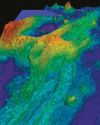
How It Works UK
An undersea volcano off the Oregon coast could erupt this year
An undersea volcano off Oregon's coast will probably erupt in 2025. The volcano, known as Axial, is a seamount 300 miles west of Cannon Beach, Oregon.
2 min |
Issue 200
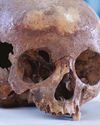
How It Works UK
The skull of Cleopatra's sister' actually belongs to an 11-year-old boy
A skull long assumed to be from Arsinoë IV, Cleopatra’s half sister, is actually from an adolescent boy who had a genetic disorder.
2 min |
Issue 200

How It Works UK
HOW THATCHED ROOFS ARE BUILT
Learn all about this historic building method that masterfully tops roofs with layers of dry vegetation
2 min |
Issue 200

How It Works UK
WHY ARE GEMS DIFFERENT COLOURS?
Unearth the gemstone chemistry that results in a spectrum of decorative stones
2 min |
Issue 200

How It Works UK
MIRROR PHYSICS
Reflect on the science of light bouncing off smooth and shiny surfaces
2 min |
Issue 200
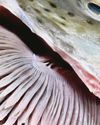
How It Works UK
Did our outer ears come from ancient fish gills?
Human outer ears may have evolved from the gills of prehistoric fish. Gene-editing experiments indicate that cartilage in fish gills migrated into the ear canal millions of years ago during the course of our evolution.
2 min |
Issue 200

How It Works UK
INSIDE A BALLPOINT PEN
Discover the mechanism that gives this everyday item the power to write
1 min |
